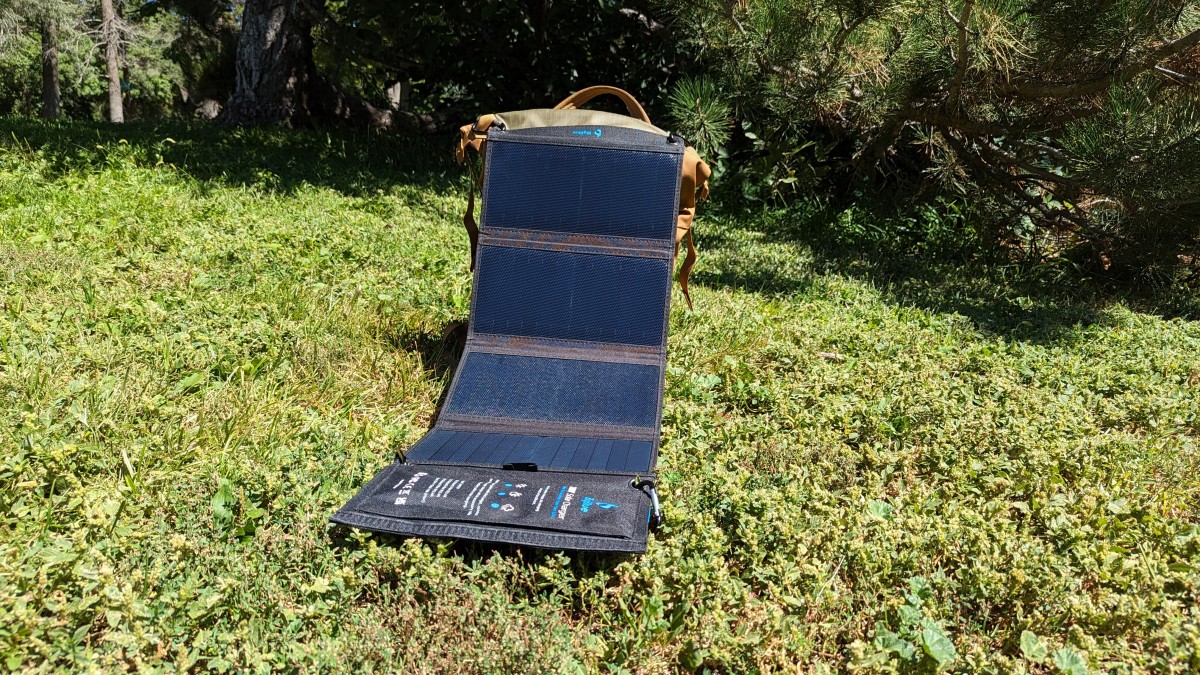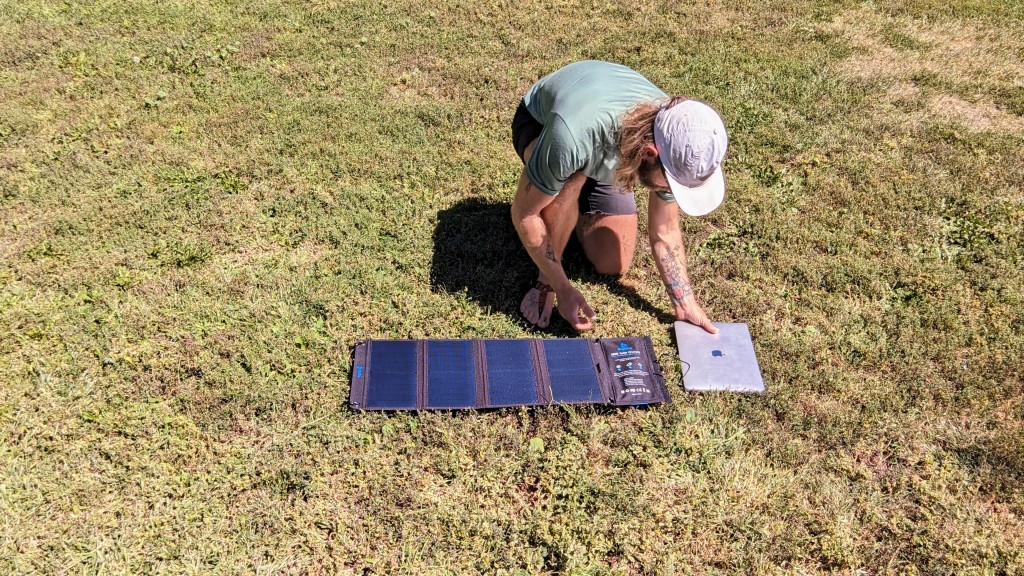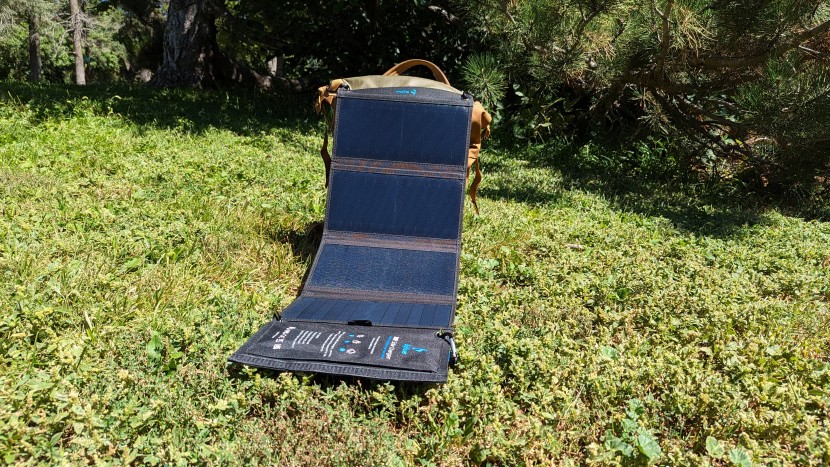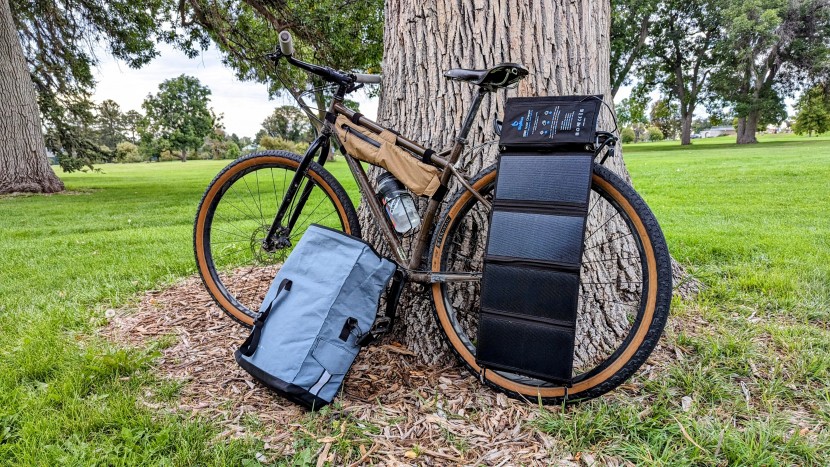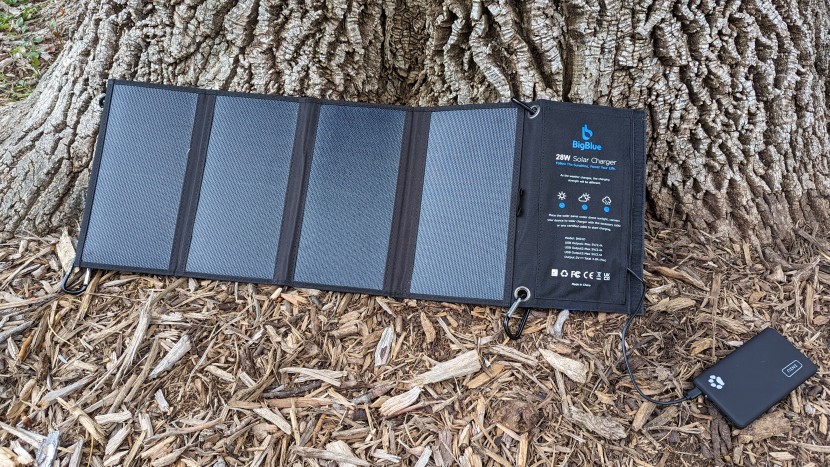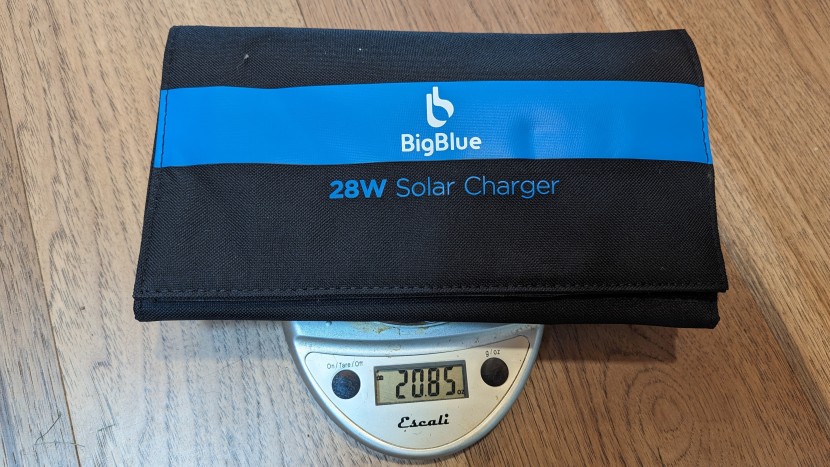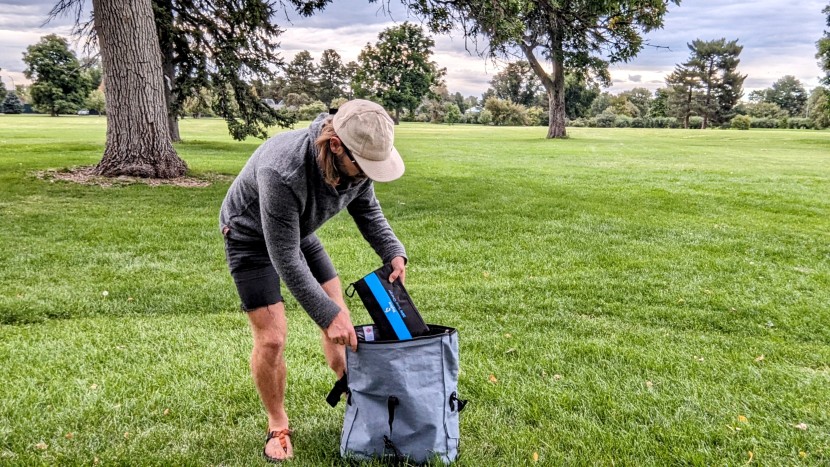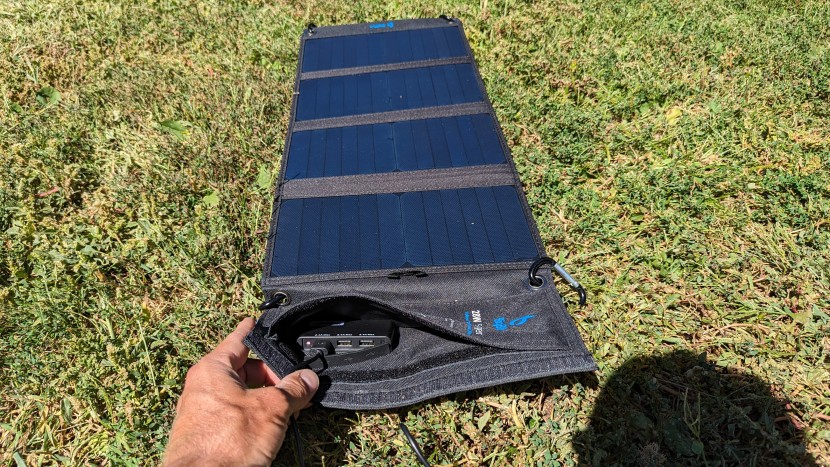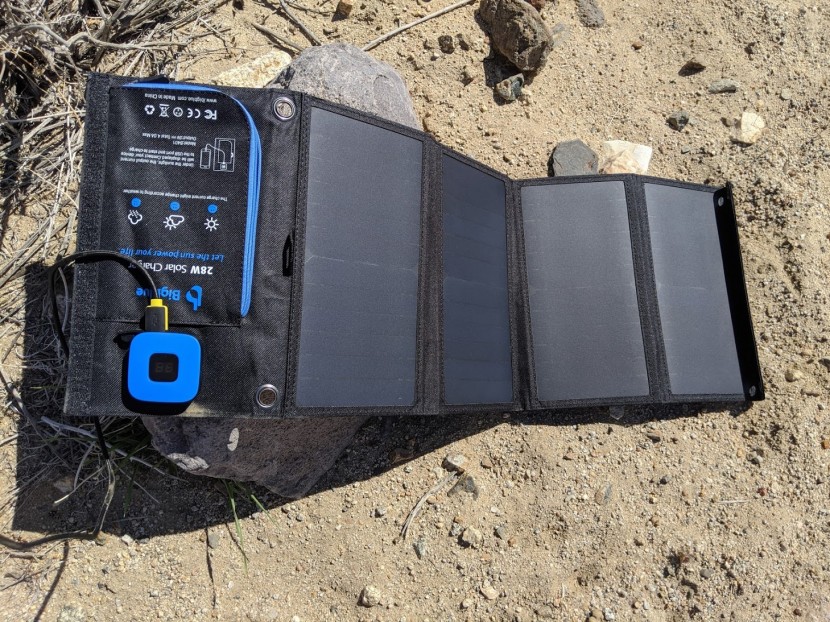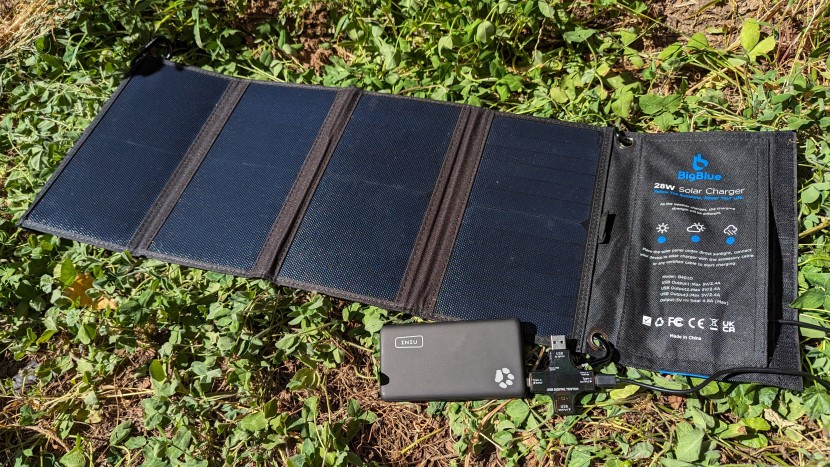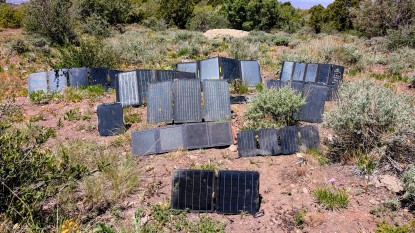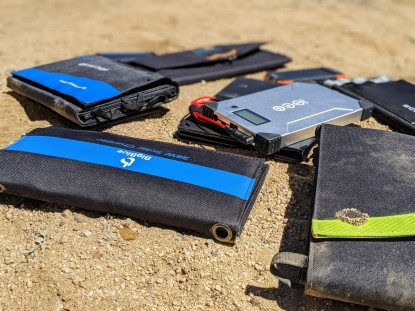We've tested numerous iterations of this portable solar charger over the years. The previous version, the BigBlue 3, came with an ammeter to monitor power output. The SolarPowa 28 is available both with and without an ammeter, allowing you to choose if you want to carry the extra bulk or not. We tested the version without the ammeter and with 3 USB-A ports. The version readily available in the US now features one USB-A port and two USB-C ports.

Our Verdict
We've tested numerous iterations of this portable solar charger over the years. The previous version, the BigBlue 3, came with an ammeter to monitor power output. The SolarPowa 28 is available both with and without an ammeter, allowing you to choose if you want to carry the extra bulk or not. We tested the version without the ammeter and with 3 USB-A ports. The version readily available in the US now features one USB-A port and two USB-C ports.
Our Analysis and Test Results
The BigBlue SolarPowa 28 is a 24-watt monocrystalline folding solar panel that weighs 20.9 ounces and measures 31 inches in length, 11.5 inches in height, and 0.2 inches in thickness when fully opened. It does not have an integrated battery, but it does have three USB ports, each of which outputs 2.4 amps. When folded up, this panel measures just 6 x 11.5 x 1.5 inches. While we tested the simplified version of the new SolarPowa 28, there is another version with an ammeter, allowing you to monitor your power output yourself.
Direct Solar Charging
The SolarPowa 28 performed exceptionally well in direct solar charging tests, outdoing the other solar panels with its four strong solar panels linked together. This panel is extremely effective at converting direct sunlight into energy.
At 28 watts, the SolarPowa 28 is a middle-of-the-road panel in terms of wattage. Still, it consistently generated the most milliamp hours of power in one hour during direct solar testing.
It has four panels, permanently linked, that each deliver seven watts for a combined total of 28 watts. It only has USB-A outputs, so the voltage output isn't as high as some USB-C or DC output models. However, that doesn't seem to make a difference, as this panel charged our devices the fastest again and again.
On a sunny day in Utah at 8,300 feet, the SolarPowa generated 2,177 mAh of charge in one hour on its 10,000 mAh test battery. This is the most of any portable solar panel we tested.
We were repeatedly surprised at the end of each one-hour test when this panel again charged its test battery fuller than the competition — including several panels with higher reported wattage. This panel punches higher than its weight class.
Indirect Solar Charging
Whether you are charging on a partly cloudy day or the sun angle changes to cast a shadow over the panel while charging, the SolarPowa 28 continues to put out more power than the rest. This model kept chugging along in less-than-ideal conditions, effectively charging its test batteries and the rest of our tech.
We were again surprised by this smaller panel in our indirect solar charging test. On another sunny day in the same location, this time with a white sheet elevated over the panel, it generated 583 mAh of charge in one hour on its 10,000 mAh test battery. This is some of the most of any panel we tested.
The large surface area on these four panels takes up enough space to capture sunlight, even when that sunlight isn't as powerful. This panel seems to do better when sunlight gets interrupted than many others, too. We repeatedly noticed this panel kept a more consistent charge when a cloud passed over the sun.
One important thing to note here is that all four SolarPowa 28 panels must be in the sun due to the device's parallel wiring. If even just one panel is in the shade, the charging dissipates significantly. However, this is the case with most portable solar chargers, so the SolarPowa is no exception.
Portability
Efficiency and ease of use are often a trade-off for portability and weight. The larger the panel, the faster it will charge your devices, and the more difficult it might be to fit into your backpack. This is also true of the BigBlue SolarPowa 28. That being said, it's still pretty portable for a higher-watt portable solar charger.
The SolarPowa 28 is one of the larger portable panels we tested and weighs just over 20 ounces. This is not the heaviest panel — not even close to it — but there are certainly lighter portable solar panels in our lineup as well.
Its packed size is relatively small. The SolarPowa 28 easily folds down three times to about the size of a notebook. It has a velcro closure to ensure it doesn't come unfolded in your bag and a velcro pouch that houses the USB outputs. There is also room in this pouch for a few charging cables and a battery bank to charge your devices.
The SolarPowa 28 doesn't fold down the absolute smallest, and sometimes we wish it were thinner when folded. However, compared to other panels of a similar wattage, this is reasonably packable and is definitely small enough to carry in a backpack.
Functionality
The BigBlue SolarPowa 28 is a highly functional and user-friendly panel. It features three USB outputs and is rugged enough to be tossed around in your bag. This is as functional as it gets, in a simple, no-frills kind of way.
The SolarPowa 28 is equipped with three USB ports and offers all the charging capacity that one could need while outside. However, it lacks DC charging, so plugging in your laptop or larger device won't work very well. You could technically charge a laptop using your own USB-A to USB-C cable, but with just 2.4 amps of output, you won't get very much power for a device that large.
Since it has three outputs, it's capable of charging up to three devices simultaneously. In general, we found that charging multiple devices simultaneously was less efficient than charging a single battery pack and then using it to charge multiple devices. That being said, you can definitely charge three devices at once with this model; it's just slower.
The SolarPowa features a rugged exterior made of thick canvas, which showed no significant signs of wear after thorough testing. It doesn't have legs to angle it at the sun, but it's light enough that you can easily prop it at an angle with a rock or two. As mentioned above, it has carabiners, allowing you to hang the panel to catch the late afternoon or early morning sun.
Should You Buy the BigBlue SolarPowa 28?
This is one of the lower-cost panels of its size. It delivers almost 30 watts of power and works well on both bright, sunny mornings and overcast afternoons. It folds up easily and delivers power when you need it without any unnecessary frills or added features. We love this panel for keeping our small devices charged up on weekend camping adventures, road trips, and even the occasional backpacking trip.
What Other Solar Panels Should You Consider?
We love the BigBlue SolarPowa 28 since it provides a consistent charge to our electronics in most situations, regardless of whether it's a partly cloudy day or if a tree branch interrupts the continuous delivery of sunlight. But if you're looking for a more portable solar panel, we recommend the small, lightweight Blavor 10W. If you're looking for more wattage in a still-portable package, check out the easy-to-set-up FlexSolar 40W.


